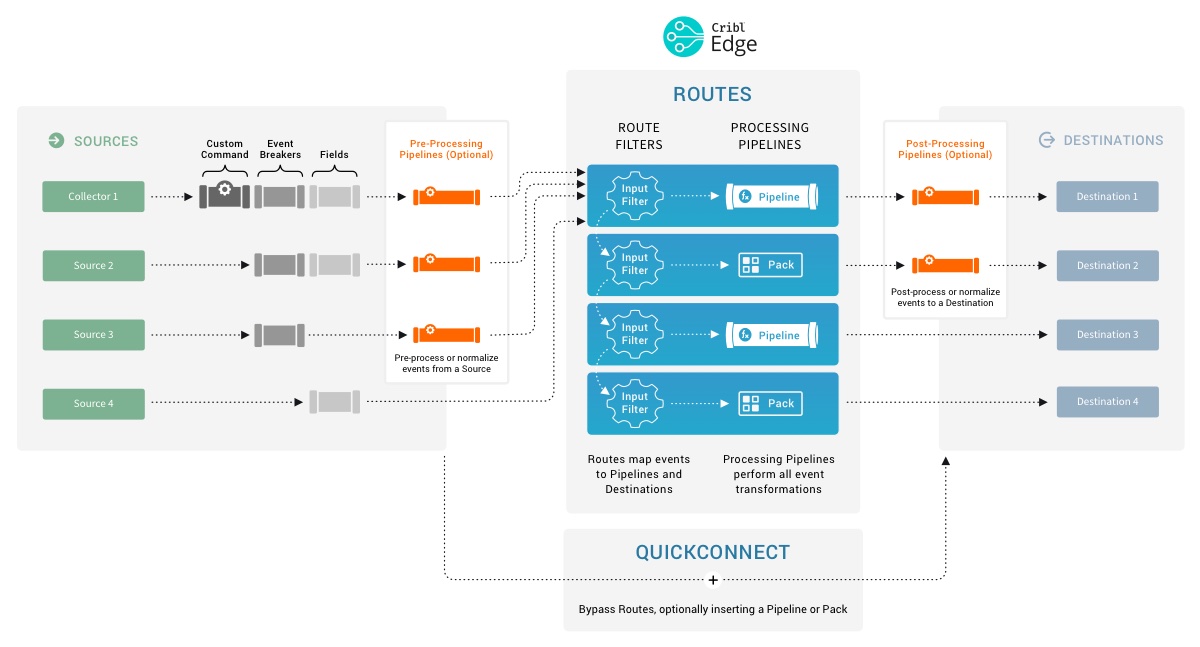Event Processing Order
See how data flows through Cribl Edge.
The expanded schematic below shows how all events in the Cribl Edge ecosystem are processed linearly, from left to right.

Here are the stages of event processing:
Sources: Data arrives from your choice of external providers. (Cribl Edge supports Splunk, HTTP/S, Elastic Beats, Amazon Kinesis/S3/SQS, Kafka, TCP raw or JSON, and many others.)
Custom command: Optionally (where available), you can pass this input’s data to an external command before the data continues downstream. This external command will consume the data via
stdin, will process it and send its output viastdout.Event Breakers can, optionally, break up incoming bytestreams into discrete events. (Note that because Event Breakers precede tokens, Breakers cannot see or act on tokens.)
Fields/Metadata: Optionally, you can add these enrichments to each incoming event. You add fields by specifying key-value pairs, per Source, in a format similar to Cribl Edge’s Eval Function. Each key defines a field name, and each value is a JavaScript expression (or constant) used to compute the field’s value.
Pre-processing Pipeline: Optionally, you can use a single Pipeline to condition (normalize) data from this input before the data reaches the Routes.
Routes map incoming events to Processing Pipelines and Destinations. A Route can accept data from multiple Sources, but each Route can be associated with only one Pipeline and one Destination.
Processing Pipelines perform all event transformations. Within a Pipeline, you define these transformations as a linear series of Functions. A Function is an atomic piece of JavaScript code invoked on each event.
Post-processing Pipeline: Optionally, you can append a Pipeline to condition (normalize) data from each Processing Pipeline before the data reaches its Destination.
Destinations: Each Route/Pipeline combination forwards processed data to your choice of streaming or storage Destination. (Cribl Edge supports Splunk, Syslog, Elastic, Kafka/Confluent, Amazon S3, Filesystem/NFS, and many other options.)
Troubleshoot event processing in Cribl Stream from right to left. Start at the Destination, and check for block status from the Destination back to the Source. If one Worker Group is sending to another, the right-most destination will be in the receiving Worker Group.
Pipelines Everywhere
All Pipelines have the same basic internal structure - they’re a series of Functions. The three Pipeline types identified above differ only in their position in the system.





